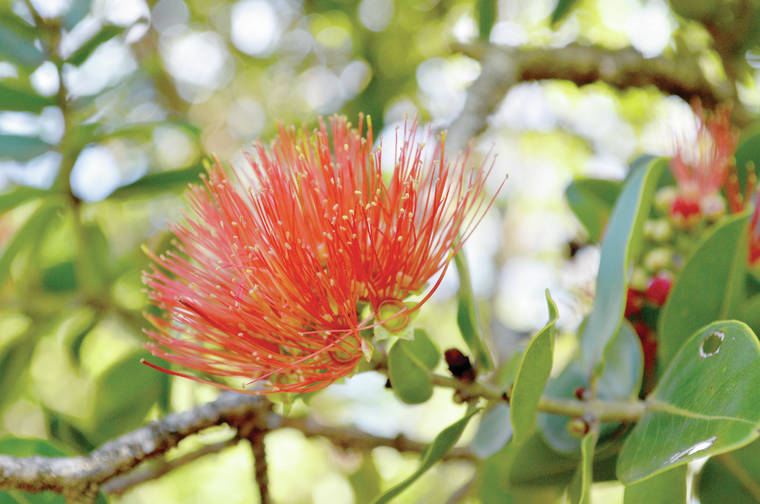HILO — So far, the fungus that causes rapid ohia death (ROD) hasn’t spread beyond Kauai or Hawaii Island after being identified in trees on Kauai last year.
And researchers and officials say collaboration has been imperative to keeping it contained.
That’s because field agents, scientists, land managers and tour companies are banding together to find out exactly how the fungus spreads, to use that information to create management practices, and to inform the public on steps they can take to help the situation.
More than 90 researchers, managers and officals gathered at the ‘Imiloa Astronomy Center of Hawaii at the University of Hawaii at Hilo campus last week for the first ever ROD symposium to share information.
“Your work is necessarily innovative and often ingenious because we’ve never encountered these pathogens, nor their effect, on our beloved ohia forest,” said Suzanne Case, chair of the state Board of Land and Natural Resources, at the symposium.
She commended those in attendance on their hard work on all fronts, “from identifying the causes of rapid ohia death to mapping its distribution and learning about how it spreads,” and “experimenting with ways to contain it and all the outreach and education so everyone in Hawaii can know how not to spread it further.”
Research into the disease, its spread and potential treatments has been underway almost since day one, when the fungus was first detected as a previously un-described disease in 2014, according to the state Department of Land and Natural Resources.
Since then, scientists have discovered the fungus impacts the ohia trees’ vascular systems, meaning water can’t move from the roots into the crowns of the trees. They also know the disease enters individual trees through wounds that can be caused by wind or hurricane events, by animals, weed-eaters, heavy equipment, pruning and trimming.
Scientists are still trying to determine how the fungus spreads from tree to tree, and the best methods of treatment.
The group also considered management methods, like boot-washing stations and whether they’re working, if there are different measures that need to be taken in addition to, or in lieu of, the boot-washing stations, and what other kinds of outreach and education need to happen.
Ohia is considered Hawaii’s most important native tree species because of its watershed-protecting abilities and cultural significance, which were also touched on during the symposium.
Kumu Kekuhi Keali‘ikanaka‘olelohaililani of Halau Ohia, was one who spoke to the group of managers and scientists, encouraging everyone who cares for Hawaii to understand the integral place ohia has in the natural landscape and the culture.
“You’ve done your job to create this collaborative, this collective movement. Ritual practices taught me that your imaginings are the experimentation, is the meetings, is the movement, the working together and the innovative approaches,” Keali‘ikanaka‘olelohaililani said.
•••
Jessica Else, environment reporter, can be reached at 245-0452 or jelse@thegardenisland.com.


